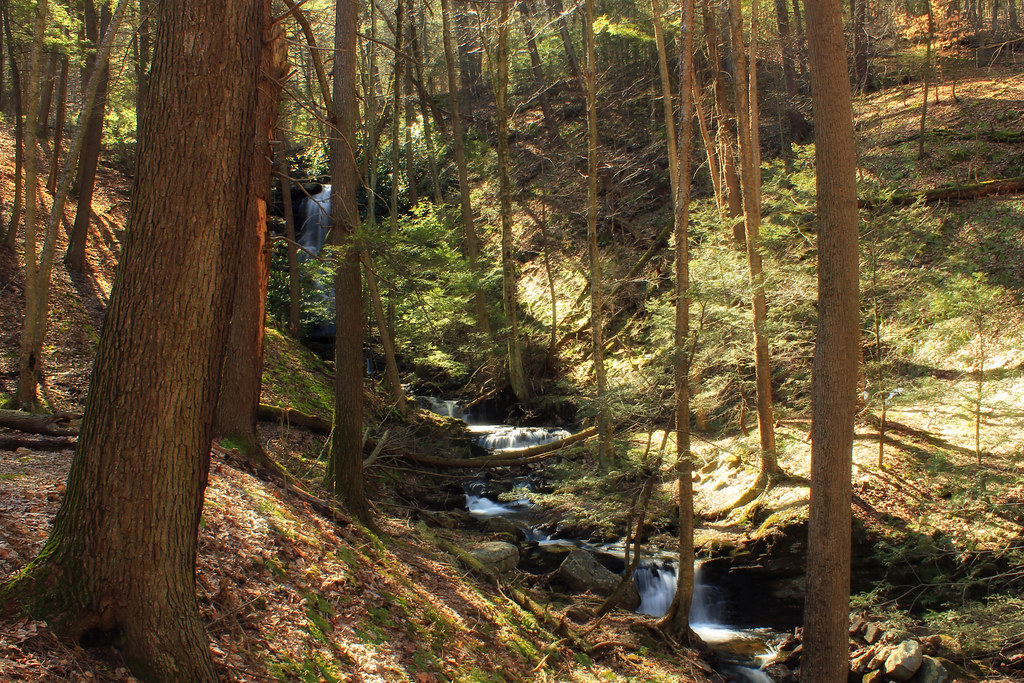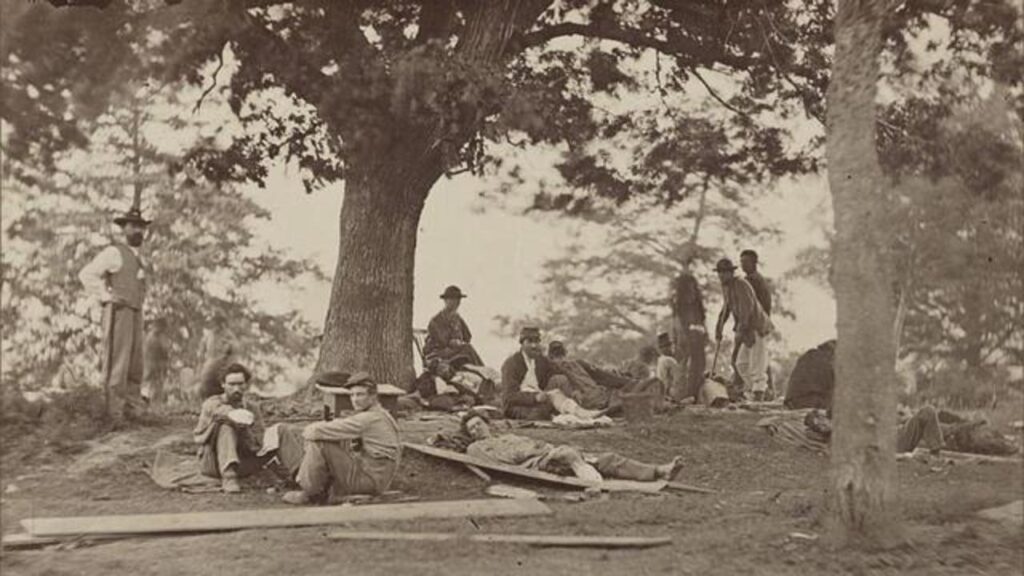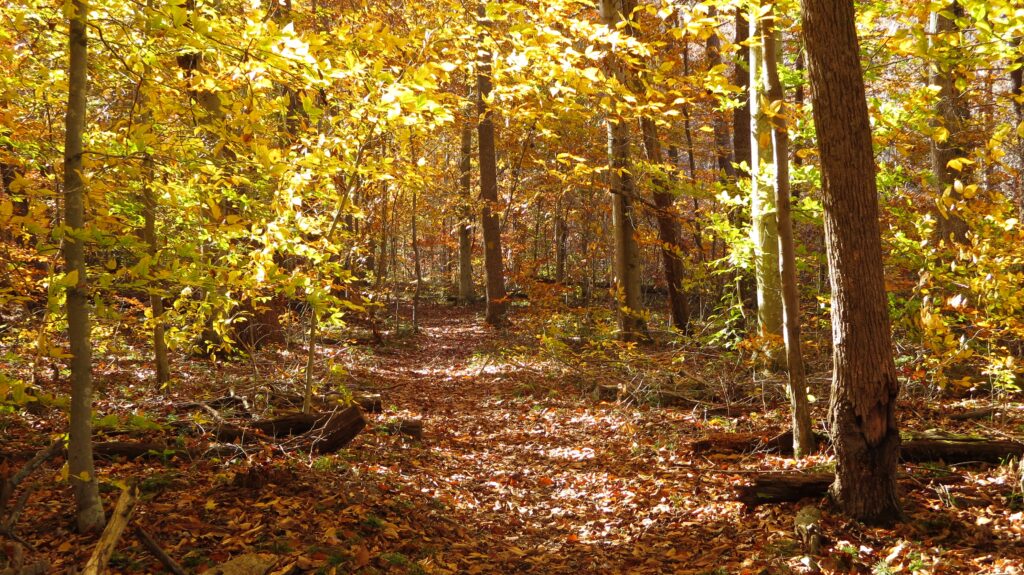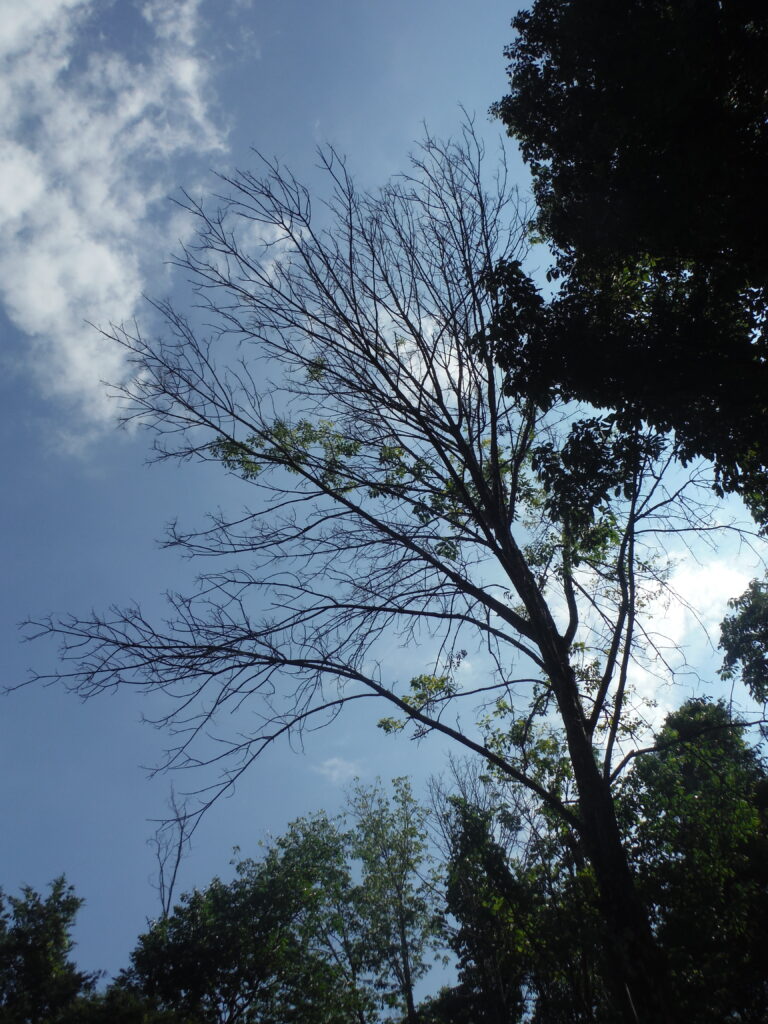Kathryn Miller and colleagues (full citation at end of blog) have published a study that examined the status and trends of forest regeneration in 39 National parks from Virginia to Maine. Four-fifths of the forest plots in the study are classified as mature or late successional – so at first glance the forests look healthy. However, the researchers made an alarming finding: in 27 of 39 parks, forest regeneration is failing – either imminently or probably. Acadia National Park is an exception; it is the only park in the study experiencing healthy regeneration. They warn that without intense, sustained – and expensive! – intervention, these forests are likely to be converted to other types of ecosystems. [I blogged recently about findings regarding regeneration in eastern forests: here and here and here and here.
The forests’ understories have too few seedlings and – especially – saplings to maintain themselves. Worse, in many cases the seedlings and saplings are not the same species as the mature trees that form the canopy. The saplings are shorter species that never reach the canopy. That is, species like pawpaw (Asimina triloba), American holly (Ilex opaca), American hornbeam (Carpinus caroliniana), and eastern redbud (Cercis canadensis) are regenerating, rather than the oaks (Quercus spp.), hickories (Carya spp.), maples (Acer spp.), and pines (Pinus spp.) that constitute the canopies of mature forests in these parks.
Miller and colleagues call these “regeneration mismatches.” In about half of the parks, these native canopy tree species make up less than half of current saplings and seedlings. This situation suggests the forests’ species composition will shift substantially, thereby undermining resilience in the face of other challenges, such as invasive plants and pests and climate change.
In many of these National parks, Miller and colleagues found abundant ash regeneration. For example, ash (Fraxinus spp.) constitute more than half of all seedlings in four parks (Johnstown Flood and Friendship Hill in Pennsylvania; Catoctin Mountain in Maryland; Manassas Battlefield in Virginia). Miller and colleagues consigned ash species to the “subcanopy class” because the emerald ash borer (EAB) has caused such high mortality of mature trees. They think regard it unlikely that current and future seedlings will ever reach full size. The devastating impact is most starkly illustrated in Gettysburg National Battlefield Park. Consistent deer management since 1996 has been rewarded: the Park ranks at the top for regeneration among the 39 parks. However, more than half of the seedlings and a quarter of the saplings are ashes. EAB has shifted the Park’s otherwise secure regeneration status into probable failure.
When regeneration fails: too many deer
Throughout the study region, the overwhelming reason regeneration fails is browsing by overabundant deer. The level of deer browse is considered “acceptable” in only four parks. Deer suppress the number of seedlings and saplings. They also skew species composition of native subcanopy species toward those less palatable. Miller and colleagues found that canopy tree density and cover and past human land use had minimal impacts on seedling and sapling numbers or species composition.
Overabundant deer also promote invasion and spread of non-native plants, which are the second most important factor impeding regeneration. Together, invasive plants and non-native earthworms are ecosystem engineers that negatively impact soil and cause cascades of biotic and abiotic impacts throughout forest ecosystems.
Many of the parks experiencing the most severe impacts of chronic deer browse also have the highest invasions by non-native plants. A natural process of regeneration occurs when the death or collapse of mature trees create gaps in the forest canopy. Where deer and invasive shrubs overlap, this process is often hijacked. Instead of nearby native tree species accelerating their growth toward the canopy, thickets of invasive shrubs crowd the space.
For this reason, Miller and colleagues recommend that park management prioritize treating invasive plants in canopy gaps of disturbed stands to avoid forest loss. They recommend deliberate creation of canopy gaps to promote resilience only for parks, or stands within parks, that have low deer and invasive plant abundance or the capacity to intensively manage invasive plants in gaps.
In most parks, non-native tree species are rare, less than 2% of total regeneration. In seven parks, though, non-native trees exceed ten percent of seedlings and/or saplings. In three parks, saplings of non-native trees are increasing. These are primarily tree-of-heaven (Ailanthus altissima) and Norway maple (Acer platanoides). In Saratoga National Historical Park, seedlings of common buckthorn (Rhamnus cathartica) are increasing.
Role of other pests
Miller and colleagues express fear that beech bark disease and beech leaf disease might have effects similar to those of EAB, leading to a greater “regeneration debt” in parks where American beech (Fagus grandifolia) is the dominant regeneration component. They cite specifically Prince William Forest Park in northern Virginia, [25 mi2] Rock Creek Park in the District of Columbia, [2.7mi2] and Saratoga National Historical Park. [5.3 mi2] The authors also suggest that thickets of beech root sprouts formed in response to BBD can suppress regeneration of other native canopy species and so might need to be managed.
Miller and colleagues mention hemlock woolly adelgid (HWA), but provide very little information. They report that Saint-Gaudens National Historical Park in New Hampshire (the home and studio of sculptor Augustus Saint-Gaudens) is at particular risk because of growth of both beech and eastern hemlock (Tsuga canadensis). I know that Delaware Water Gap National Recreation Area [109m2] has experienced major losses of mature hemlocks. [Shenandoah National Park has also, but it was not included in the study.]

Miller and colleagues report that Acadia National Park is seeing recovery of red spruce (Picea rubens) from a major fire in 1947 and possibly also from acid rain. They do not mention the longer-term threat from the brown spruce longhorned beetle. Their focus is on forest dynamics largely unaffected by deer.
In the same way, the authors make no mention of the absence of dogwood trees, presumably because they had been eliminated by dogwood anthracnose decades ago. Nor do they mention vascular streak dieback of redbud; the causal agent still uncertain. [See Annie Self’s presentation to National Plant Board, August 2023.]
One omission is large enough that it might affect the study’s findings. At mi2 Shenandoah is the largest National Park in the region. It was not included in the study because the Park’s forest monitoring process is not compatible with those in other NPS units. All the other parks – including Acadia (562 mi) – are much smaller, protecting historic sites like Civil War battlefields.
RECOMMENDATIONS
Miller and colleagues recommend that deer management be initiated in parks classified as at imminent or probable regeneration failure, if such programs are not already under way. They warn that effective deer management requires sustained commitment. Studies of deer exclosures show that full forest recovery from chronic deer overabundance can take as long as 40–70 years.
The authors also recommend actions to open the subcanopy to facilitate growth of saplings belonging to desired species. They caution that deer predation must be controlled. Furthermore, either invasive plant cover must be low, or management must ensure that that the park has sufficient resources to sustain an invasive plant control program – especially if invasive plants are combined with abundant deer.
Parks experiencing compositional mismatches and that are dominated by oak–hickory forest types might also benefit from prescribed burning. Again, deer browse pressure must be minimized. In addition, regeneration of oaks and hickories must already be present.
In park forests dominated by species vulnerable to lethal pests, e.g., beech-, ash-, or hemlock-dominated forest stands, Miller and colleagues recommend considering planting alternative native canopy species and protecting those plantings from deer. Park managers should also consider thinning beech thickets formed after beech bark disease kills canopy trees.
Media coverage
The Washington, D.C., public radio station, WAMU, reported on this research on the air (broadcast December 20) and on its website. It is written by Jacob Fenston, with great photographs by Tyrone Turner. The story emphasized the link between deer and invasive plants – since regeneration in eastern deciduous forest happens by saplings taking advantage of gaps formed when mature trees die. The story quotes DC-area people on their efforts to contain vines. The Natural Resource Manager at Catoctin Mountain Park [8 mi2] describes that park’s longstanding deer control program. The story also mentions impacts of EAB and threat of BLD.
News – Funding for these parks to counter the threats!
Lead author Kathryn Miller has informed me that the Bipartisan Infrastructure Law and Inflation Reduction Act has provided the 39 parks involved in this study over $10 million to improve forest resilience largely through reduction of invasive plants and overabundant deer.
Of course, invasive species threats to National parks are not limited to the Northeast – nor are they new. I have raised this problem from the beginning. To see these blogs, on the “nivemnic” website, scroll down below the archives to the “categories”, then click on “national parks”.
SOURCE
Miller, K.M., S.J. Perles, J.P. Schmit, E.R. Matthews, M.R. Marshall. 2023. Overabundant deer and invasive plants drive widespread regeneration debt in eastern United States national parks. Ecological Applications. 2023;33:e2837. https://onlinelibrary.wiley.com/r/eap Open Access
Posted by Faith Campbell
We welcome comments that supplement or correct factual information, suggest new approaches, or promote thoughtful consideration. We post comments that disagree with us — but not those we judge to be not civil or inflammatory.
For a detailed discussion of the policies and practices that have allowed these pests to enter and spread – and that do not promote effective restoration strategies – review the Fading Forests report at http://treeimprovement.utk.edu/FadingForests.htm
or


